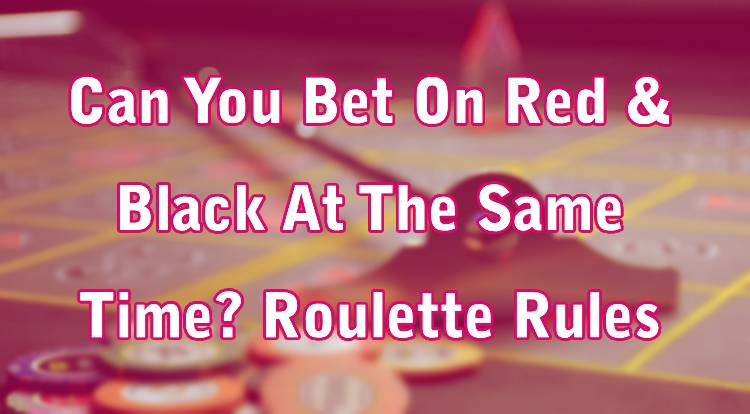
Ever wondered about the ins and outs of roulette betting? One commonly asked question is whether you can place your chips on both red and black at the same time. It might seem like a surefire way to win, but there's more to it than meets the eye.
Here at Money Reels casino, we will dive into the rules of roulette, shedding light on what you can and can't do at the table. We're here to guide you through the basics, making the game clear and straightforward. Whether you're a total newbie or just looking to brush up on your knowledge, we've got you covered.
Stay tuned as we explore the fascinating world of roulette betting together, ensuring you're well-informed and ready to play responsibly.
Can You Bet On Both Red & Black In Roulette?
Yes, in roulette, it is indeed possible to place your bets on both red and black at the same time. This might sound like an appealing strategy because it seems to offer a safety net, as you're covering a large portion of the wheel with just two bets. However, it's not as straightforward as it sounds.
Before you get too excited, there's an important rule to remember. While betting on both red and black increases your chances of winning, the casino has accounted for this. How? The payouts for red or black bets are 1:1 (even money). This means if you bet £10 on red or black and win, you get to keep your bet and receive £10 in winnings. So, if you bet on both, you only break even because you can't win on both. So, you receive £10 in winnings and keep your bet on one of them but lose £10 on the other, so you only have the same as you started with.
Then there's the presence of the green zero (or zeros if you're playing American roulette), which represents the house's edge and results in a loss in either instance, so you could lose all your bets.
Remember, roulette is a game of chance, and there are no guaranteed winning strategies. Betting on both red and black might seem like a safe approach, but it's not a foolproof way to make money. It's crucial to gamble responsibly and within your limits above all else. Always play wisely and know when to stop.
Is Red & Black Truly 50/50?
At first glance, betting on red or black in roulette seems like a straight shot at a 50/50 chance, doesn't it? Each spin of the wheel, you might think, has an equal chance of landing on either colour. However, there's a slight twist that tilts the scale just a bit.
Let's not forget the green zero pocket (or pockets, if you're playing the American version with a double zero). This sneaky addition changes the game. Because of the zero and double zero, bets on red or black have slightly less than a 50% chance of winning because they count as a loss whether you bet on red, black, or both.
In European roulette, which has one green zero, the probability of hitting red or black is about 48.6%. In the American version, with both a zero and a double zero, this drops to about 47.4%. These percentages account for the house edge – the slight advantage that the casino has over players in the long run.
Understanding this nuance is crucial. It highlights that while betting on red or black offers nearly even odds, it's not a perfect 50/50 split. Always keep this in mind when laying down your chips, and remember that roulette, like all casino games, is down to chance.
Is Betting On Red & Black Smart?
Betting on both red and black in roulette might sound like a smart move at first. After all, if you're covering nearly all the outcomes, you're more likely to win, right? Well, it's a bit more complex than that.
Placing bets on both red and black does increase your chances of landing a win on each spin. However, it's essential to remember the green zero pocket (and double zero in American roulette). These are neither red nor black, and if the ball lands on them, you lose both bets.
Furthermore, even though this strategy might seem low-risk, the returns are also low. You're essentially betting against yourself at the same odds, so while you may be more likely to win, you're also limiting your potential winnings.
For example, say you bet £5 on both red and black, and they both pay out at 1:1; only one of these can win. So, you get to keep the £5 winning bet and receive £5 in winnings, but you also lose £5 on the other bet. So, the winnings simply cover this loss, meaning you break even. Then there is also the possibility of both bets losing and you being down £10 if the ball lands on a green zero pocket.
Is it smart, then? It can be a way to familiarise yourself with the game. However, for long-term play, it's not considered the wisest strategy in terms of potential returns or gameplay.
It's crucial to find a balance between enjoying the game and betting wisely and responsibly. Remember, roulette is a game of chance, and there's no surefire strategy to win. The best approach is to set a budget, play responsibly, and enjoy the experience for what it is – a game of chance.
*All values (Bet Levels, Maximum Wins, etc.) mentioned in relation to this game are subject to change at any time. Game features mentioned may not be available in some jurisdictions.
